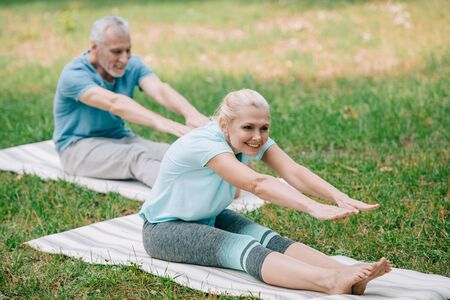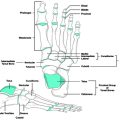Foundations of Therapeutic Exercise in Physical Therapy
What is Therapeutic Exercise?
Therapeutic exercise is a cornerstone of physical therapy in the United States. It involves planned and structured movements designed to help people recover from injuries, manage chronic conditions, or improve overall function and quality of life. Unlike general fitness routines, therapeutic exercise programs are tailored by licensed physical therapists based on each person’s unique needs and medical history.
Key Goals of Therapeutic Exercise
The main goals of therapeutic exercise in American physical therapy settings include:
| Goal | Description |
|---|---|
| Restore Function | Help patients regain movement, strength, and flexibility after injury or surgery. |
| Reduce Pain | Decrease discomfort through targeted exercises that address underlying issues. |
| Prevent Injury | Enhance balance, coordination, and body mechanics to avoid future injuries. |
| Promote Independence | Support patients in performing daily activities safely and confidently. |
| Improve Quality of Life | Encourage active lifestyles and participation in work, hobbies, and community. |
The Role of Evidence-Based Practice
In the United States, evidence-based practice is essential for providing high-quality physical therapy care. This approach means that physical therapists use up-to-date scientific research, clinical experience, and patient preferences to guide decisions about which exercises are most effective. The American Physical Therapy Association (APTA) strongly encourages therapists to stay current with new research so they can offer the best possible care. This ensures that every therapeutic exercise program is safe, effective, and personalized for each individual’s goals and needs.
2. Assessment and Individualization of Exercise Programs
Understanding the Importance of Patient Evaluation
In physical therapy, creating a successful therapeutic exercise program always begins with a thorough patient evaluation. This step is essential for understanding each persons unique health status, goals, and challenges. Physical therapists in the United States use a holistic approach, considering not just the injury or diagnosis, but also how it affects daily life, work, family roles, and community participation.
Functional Movement Assessments
One key part of the evaluation process is assessing functional movement. These assessments help therapists see how well a patient moves during real-life activities like walking, lifting, reaching, or climbing stairs. Common tools and tests include:
| Assessment Tool | Description | Purpose |
|---|---|---|
| Functional Movement Screen (FMS) | Seven movement patterns rated for quality and control | Identifies movement limitations or asymmetries |
| Berg Balance Scale | Fourteen simple balance tasks scored on a scale | Evaluates fall risk and balance ability |
| TUG Test (Timed Up and Go) | Measures time to stand up, walk, turn, and sit down | Assesses mobility and safety in elderly or post-injury patients |
| 6-Minute Walk Test | Patient walks as far as possible in six minutes | Checks endurance and cardiovascular fitness |
Cultural Sensitivity in Program Design
The U.S. is a diverse country, so therapists must understand and respect each patients cultural background when designing exercise plans. This means being aware of language preferences, religious beliefs that might influence activity choices, family dynamics, dietary habits, and attitudes toward health care. For example, some patients may prefer group-based activities for social support, while others value privacy or have modesty concerns about certain exercises.
Examples of Individualization Based on Cultural Needs
| Cultural Consideration | How Exercise Plan Is Adapted |
|---|---|
| Language barriers | Use interpreters or bilingual materials; demonstrate exercises visually. |
| Religious practices (e.g., prayer times or fasting) | Schedule sessions around important times; avoid strenuous activity during fasting hours. |
| Modesty concerns | Select clothing-appropriate exercises; provide private spaces if needed. |
| Family involvement preference | Encourage family members to join sessions for motivation and support. |
| Differing views on pain or disability | Educate on safe pain levels; address misconceptions gently. |
The Role of Goal Setting in Individualized Care
A big part of tailoring exercise programs is setting goals that matter to the patient. In the U.S., therapists often use SMART goals—Specific, Measurable, Achievable, Relevant, Time-bound—to keep progress clear and motivating. For example:
- “Walk independently for 10 minutes without a cane within four weeks.”
- “Return to gardening twice per week by next month.”
- “Climb one flight of stairs safely by discharge date.”
Collaboration with Patients and Families
Therapists work closely with patients—and sometimes their families—to ensure that exercise plans fit their lifestyles and beliefs. This partnership builds trust and helps patients stay engaged with their rehabilitation journey.

3. Core Exercise Modalities and Techniques
Flexibility Exercises
Flexibility training is essential for maintaining joint range of motion and preventing injury. In American physical therapy practice, static stretching, dynamic stretching, and proprioceptive neuromuscular facilitation (PNF) are commonly used. Static stretching involves holding a muscle in a lengthened position for 20-30 seconds, often used post-activity. Dynamic stretching uses controlled movements to prepare the body for activity and is popular in sports rehab settings. PNF combines stretching and contracting of the targeted muscles, typically requiring a partner or therapist.
| Type | Description | Example Protocol |
|---|---|---|
| Static Stretching | Hold stretch for 20-30 seconds, repeat 2-4 times | Hamstring stretch, calf stretch |
| Dynamic Stretching | Active movement through full ROM, 10-15 reps | Leg swings, arm circles |
| PNF Stretching | Contract-relax technique with assistance | Partner-assisted hamstring stretch |
Strengthening Exercises
Building muscle strength is a cornerstone of rehabilitation. In the U.S., therapists frequently use protocols like the DeLorme Method (progressive resistance), Oxford Technique (regressive resistance), and circuit training with both free weights and resistance bands. Strengthening can target specific muscle groups depending on the patient’s needs, such as quadriceps after knee surgery or rotator cuff muscles for shoulder injuries.
Common American-Based Strength Training Approaches:
- DeLorme Method: Start with lighter weights and increase resistance gradually over three sets.
- Oxford Technique: Begin with heavier weights and reduce resistance each set as fatigue increases.
- Circuit Training: Rotate through a series of strengthening exercises targeting multiple muscle groups.
- TheraBand Protocols: Use color-coded elastic bands to provide progressive resistance, widely used in clinics across the U.S.
Balance and Proprioception Training
Balance exercises help patients regain stability and prevent falls, particularly important for older adults or those recovering from lower limb injuries. American protocols often include single-leg stands, use of balance boards or foam pads, and functional activities like tandem walking. These exercises challenge the body’s ability to maintain control during movement or when standing still.
Sample Balance Training Progression:
- Double-leg stance on firm surface
- Single-leg stance on firm surface
- Double-leg stance on foam pad or balance board
- Tandem walking (heel-to-toe)
- Add upper body movements or close eyes for increased challenge
Endurance Training
Endurance exercises aim to improve cardiovascular health and muscular stamina. In most American physical therapy settings, endurance training may involve treadmill walking, stationary cycling, or using elliptical machines. Therapists often start with low intensity and gradually increase duration and difficulty based on patient tolerance.
| Exercise Type | Description/Goal | Typical Protocol Example |
|---|---|---|
| Treadmill Walking | Improve lower extremity endurance & gait mechanics | Start at 5-10 mins at comfortable pace; progress by 1-2 mins/session as tolerated |
| Cycling (Stationary Bike) | Enhance aerobic capacity & knee range of motion post-surgery/injury | Bout of 10-20 mins at low resistance; increase time/resistance gradually weekly |
| Circuit Endurance Training | Total body conditioning using a series of stations/exercises with minimal rest in between | Circuit of 5-8 exercises, repeat 2-3 times with 30 sec – 1 min per station |
Neuromuscular Re-Education Techniques
This category focuses on retraining the nerves and muscles to work together effectively after injury or surgery. In American clinics, techniques may include task-specific training (such as step-ups for stairs), use of biofeedback devices, functional electrical stimulation (FES), and guided motor imagery. These approaches help restore coordination, correct movement patterns, and prevent future injuries.
Main Neuromuscular Re-Education Methods Used in the U.S.:
- Tactile Cueing: Using manual guidance or taping to enhance movement awareness
- Biofeedback: Visual or auditory feedback to improve muscle activation
- Plyometrics: Quick stretch-shortening activities for return-to-sport programs
- Bosu Ball/Balancing Tools: Used for dynamic stabilization drills
- Mental Practice/Motor Imagery: Patient visualizes correct movement before performing task
The combination of these core exercise modalities forms the foundation of evidence-based therapeutic exercise programs in American physical therapy practice. By tailoring flexibility, strength, balance, endurance, and neuromuscular re-education techniques to each patient’s needs—and following established U.S.-based protocols—therapists can maximize recovery outcomes while ensuring safety and engagement throughout rehabilitation.
4. Integrating Technology and Evidence-Based Innovations
The Growing Role of Technology in Physical Therapy
Modern technology is transforming how physical therapists deliver care, making therapeutic exercise programs more effective and accessible for patients across the United States. From wearable fitness trackers to interactive exercise apps, these tools help therapists monitor progress, adjust exercises in real time, and keep patients motivated during their rehabilitation journey.
Telehealth: Expanding Access to Care
Telehealth has become an essential part of physical therapy, especially since the COVID-19 pandemic. With secure video calls, therapists can guide patients through personalized exercise routines at home, reducing travel barriers and increasing convenience. This approach ensures that individuals in rural or underserved areas receive high-quality care without needing to visit a clinic in person.
Benefits of Telehealth in Physical Therapy
| Benefit | Description |
|---|---|
| Accessibility | Patients can attend sessions from anywhere, making it easier for those with mobility or transportation challenges. |
| Convenience | Flexible scheduling allows sessions to fit around work, school, or family commitments. |
| Continuity of Care | Regular virtual check-ins help maintain progress between in-person visits. |
| Patient Engagement | Digital platforms offer reminders and feedback, encouraging patients to stick with their exercise plans. |
Evidence-Based Innovations in Exercise Programs
Staying up-to-date with current research is vital for creating effective rehabilitation plans. Physical therapists use evidence-based practices by reviewing scientific studies and clinical guidelines to select exercises proven to deliver results. This means every stretch, strength-building move, or balance activity included in your program is chosen because it works—not just because its tradition.
Examples of Evidence-Based Approaches:
- Progressive Resistance Training: Supported by research for improving muscle strength after injuries or surgery.
- Task-Specific Training: Practicing real-life activities (like walking on uneven ground) helps restore daily function faster.
- Pain Science Education: Educating patients about pain helps reduce fear and improve outcomes during recovery.
The Future: Combining Tech and Research for Better Results
By blending cutting-edge technology with the latest evidence-based methods, physical therapists can deliver more personalized and effective exercise programs. This combination helps patients reach their goals faster—whether thats returning to sports, getting back to work, or simply enjoying life without pain.
5. Patient Engagement and Culturally Competent Care
Understanding the Importance of Patient Engagement
Patient engagement is a critical factor in the success of therapeutic exercise programs in physical therapy. When patients are actively involved and motivated, they are more likely to follow their exercise plans, leading to better outcomes. Building trust, providing clear communication, and making the process interactive can significantly boost engagement.
Strategies for Motivating Patients
Motivating patients requires understanding their goals, barriers, and preferences. Here are some practical strategies commonly used in the United States:
| Strategy | Description | Example |
|---|---|---|
| Goal Setting | Work with patients to set realistic, meaningful goals that matter to them. | Help a patient aim to walk independently at their daughter’s wedding. |
| Positive Reinforcement | Recognize achievements, no matter how small, to encourage continued effort. | Praise a patient for consistently completing home exercises. |
| Education | Explain the “why” behind each exercise to increase understanding and buy-in. | Show how strengthening exercises will reduce back pain during daily activities. |
| Personalization | Adapt programs based on individual interests and lifestyles. | Include sports-related exercises for athletes or dance-based movements for those who enjoy dancing. |
| Regular Check-Ins | Schedule follow-up sessions to address concerns and adjust plans as needed. | Weekly phone calls or telehealth visits to discuss progress and challenges. |
Promoting Adherence in Exercise Programs
Sustaining adherence is a common challenge. To promote long-term participation:
- Create Easy-to-Follow Routines: Use simple instructions and demonstrations, possibly sharing video resources or mobile app reminders tailored for American patients tech-savviness.
- Involve Family or Community: Encourage family members or friends to participate, turning exercise into a social activity when appropriate.
- Address Barriers: Work with patients to identify obstacles such as time constraints, transportation issues, or financial limitations, and find creative solutions together.
- Cultural Sensitivity: Acknowledge holidays, dietary customs, and religious practices that may affect exercise routines or scheduling.
Culturally Competent Care in Diverse American Communities
The United States is home to people from many backgrounds. Providing culturally competent care means respecting individual beliefs, values, and health practices while delivering evidence-based physical therapy. Here’s how therapists can adapt:
| Cultural Consideration | How to Address It in Therapy | Practical Example |
|---|---|---|
| Language Preferences | Offer materials in multiple languages or use interpreter services as needed. | Provide Spanish-language exercise handouts for Hispanic/Latino patients. |
| Cultural Beliefs about Health & Healing | Acknowledge traditional healing practices and integrate them when safe and appropriate. | If a patient uses acupuncture or herbal remedies, discuss ways these may complement therapy. |
| Diverse Family Roles & Involvement | Recognize the importance of family decision-making in some cultures and include family members in discussions if desired by the patient. | Invite family caregivers to learn transfer techniques alongside the patient when relevant. |
| Sensitivity to Modesty & Gender Roles | Create a comfortable environment by offering private spaces or same-gender therapists when requested. | If a female patient prefers a female therapist for cultural reasons, accommodate this preference whenever possible. |
| Acknowledging Socioeconomic Barriers | Select cost-effective equipment options or suggest home-based alternatives when necessary. | If gym access is an issue, recommend exercises that require only body weight or household items like water bottles as weights. |
Key Takeaways for Physical Therapists in America
- Create an open dialogue: Listen carefully to each patients story and concerns before designing their program.
- Be flexible and adaptive: Adjust your approach based on feedback, cultural background, and patient lifestyle changes over time.
- Pursue ongoing learning: Stay updated on best practices in culturally competent care through workshops, community engagement, and continuing education courses relevant to your patient population.


